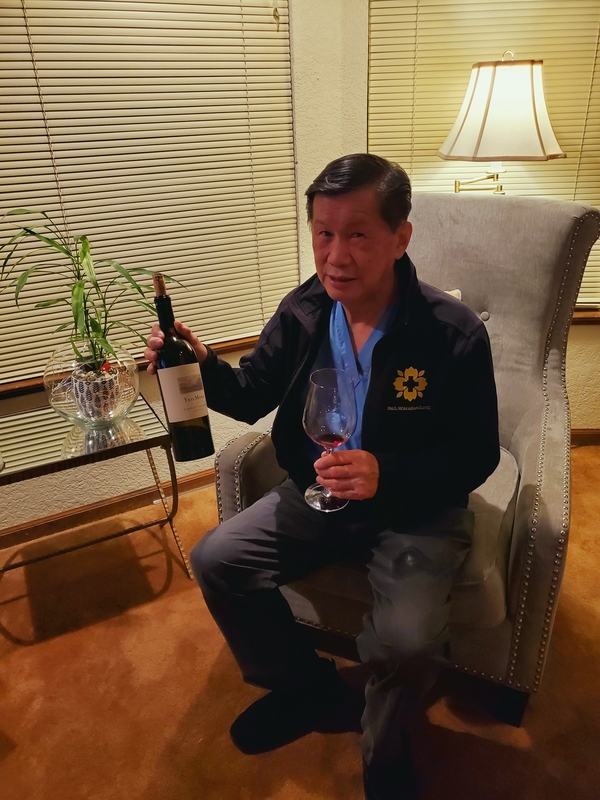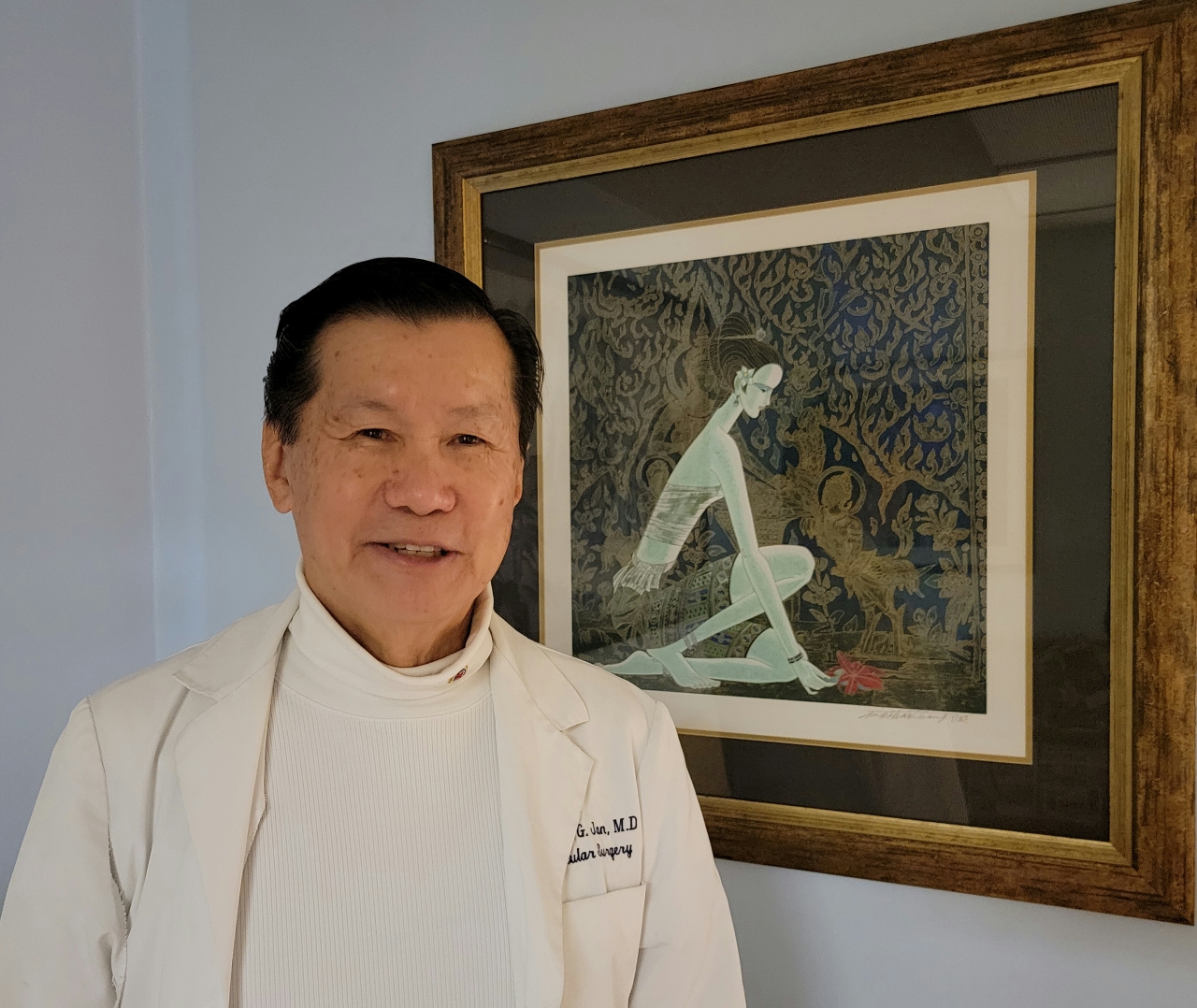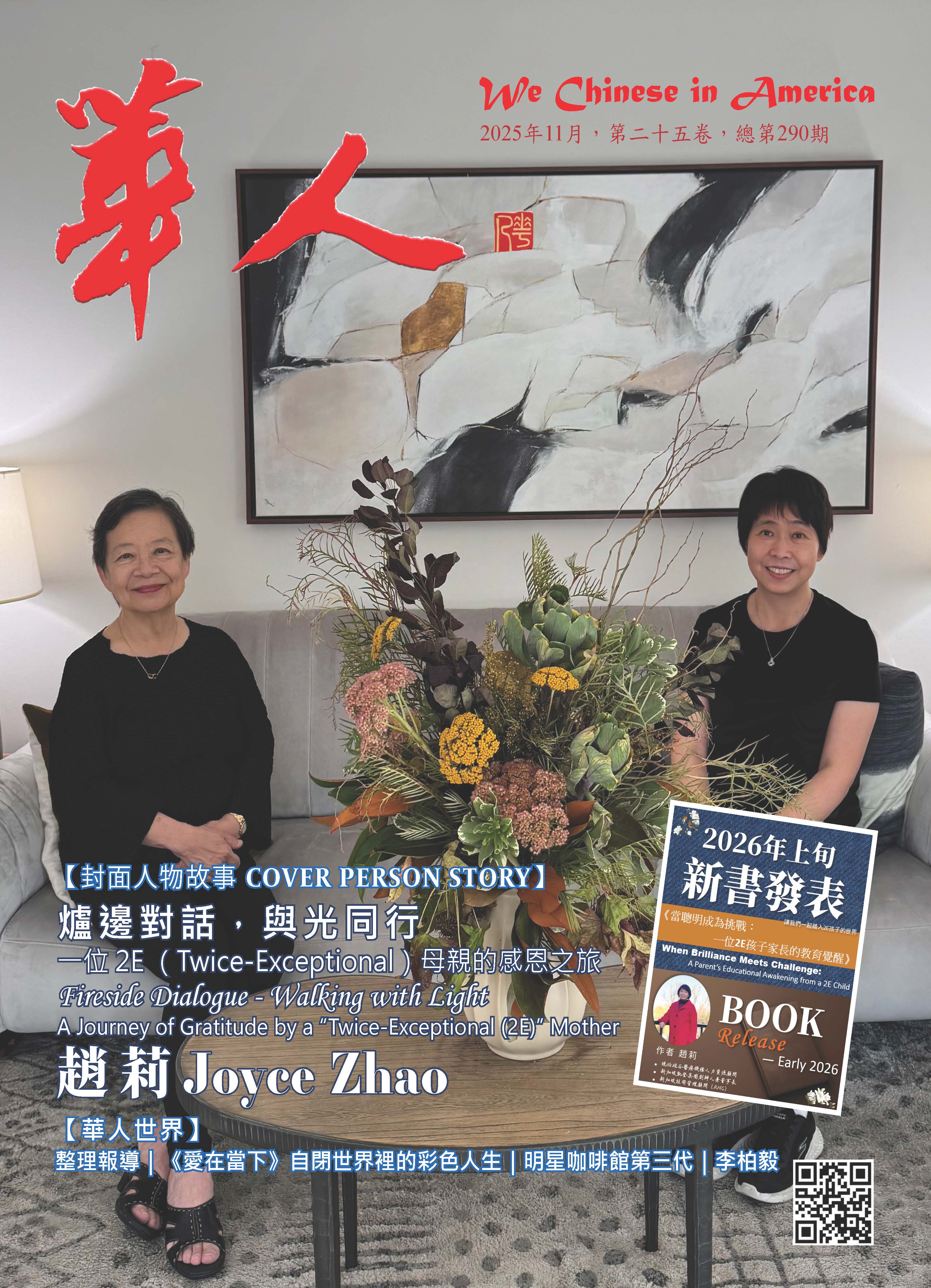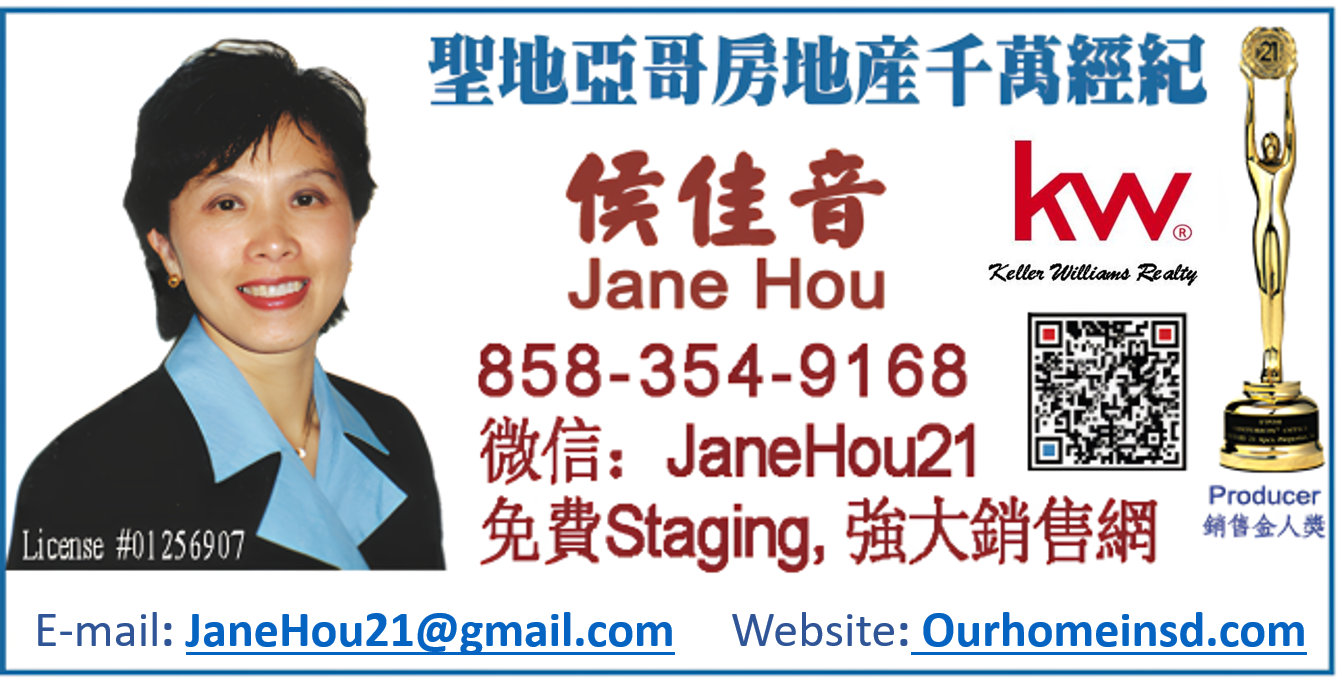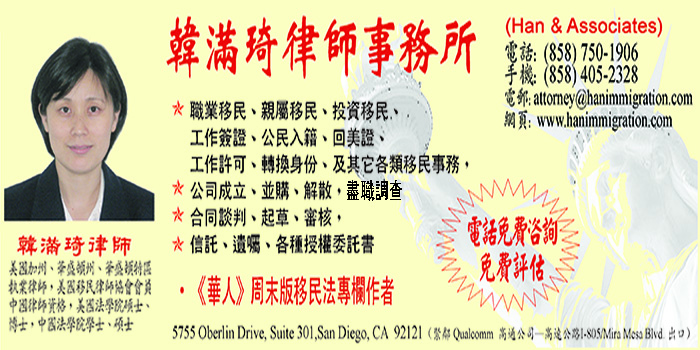|
Entering Times Square on New Year’s Eve.Gabby Jones for The New York Times (Photo Source: The New York Times) OMICRON VS COVID 19 Either due to the intrinsic biological reasons or higher levels of population immunity, the recent evidence suggests that Omicron really is less severe than earlier versions of the COVID 19. As a matter of fact, in South Africa and England, New York, San Francisco and other parts of the U.S., hospitalization numbers are lower than doctors had feared. |
|
Nevertheless, Omicron will still do terrible damage among the unvaccinated population globally. Many hospitals will face the risk of being overwhelmed in coming weeks. |
|
Even though the current surge begins weakening, it will likely have left a couple of hopeful prospects: (1). Omicron is so contagious that it will have infected a significant number of the population, increasing the amount of Covid immunity, and helping defang the virus. (2). Omicron has also helped Americans refocus on the importance of booster shots and further increasing immunity. |
|
In addition, the world has more powerful weapons to fight Covid than it did only a few weeks ago. Merck and Pfizer have come up two new post-infection treatments that would lower the risk of hospitalization and death. Based on the early research trials, with Pfizer’s treatment, the reduction is by almost 90 percent, |
|
Based on research and what has transpired, Omicron will likely become an endemic disease and a normal part of daily life just like a typical flu. No doubt, vaccination, treatment, and research will remain important to continue to battle Covid. |
|
It is important to understand that endemic disease does not need to dominate life the way a pandemic does. It does not need to cause the social isolation and public-health problems that Covid has over the past two years. If in 2022, the U.S. will reach that point, the next New Year will feel a lot more satisfying than this one. Let’s remain hopeful. (Compiled from online information) |
(We Chinese in America Media Editor Tang Zhao, December 18, 2021) The cover story of the December 2021 issue of "We Chinese in America" was an interview with Dr. Ronald Jan. Dr. Jan is not only a successful surgeon, but he also has many hobbies. His past experiences in sports included track, cross country, and judo. He also studied piano for 7 years and trombone for 5 years and sang with the Sacramento Symphony Chorus for 14 years. In addition, he has a fondness for wine tasting and food pairing. Recently he passed with merit WSET level 3 test. In the cover story, due to the space, there was no in-depth report on Dr. Jan’s wine tasting and food pairing hobby. We are pleased that we had an opportunity to interview Dr. Jan specifically regarding his wine tasting and food pairing hobby.
Dr. Ronald Jan and His Wine Tasting Journey & Certificate
Reporter: Dr. Jan: Congratulations on being awarded a WSET Level 3 Certificate. Please help us understand what this Certificate is about, what kind of qualifications are required to receive this certificate, and what it means to you, a person who is very interested and engaging in a wide range of research on wine tasting?
Dr. Jan: WSET = Wine and Spirits Education Trust is an internationally recognized organization formed in 1969 to further the knowledge of wine and spirits. Based out of London this prestigious organization began education of both wines and spirits. Its curriculum has evolved to a point where it offers 3 separate tracts -
Wine in 4 levels
Spirits in 3 levels
Sake in 2 levels.
WSET exams are taken after completing each of the courses at each of the different levels.
For example, for wines the WSET 3 wine exam has 2 main parts: 1. The cognitive factual and understanding of wines - grape growing and wine making all over the world and 2. Tasting and evaluating red and white wines.
The WSET 3 for wines (Wine level 3) course seeks to answer the question, “What are the factors that determine the style and quality of the wine in my glass (no matter what wine I encounter)?” So that, I will be able to explain to friends, customers or colleagues why the wines that they love taste the way they do. And so, a person who has passed the WSET level 3 exam on wines should understand how the grapes are grown, how the wines are made and why the wines taste the way they do. WSET 3 certification places a person into a position (should he/she wish) to take the final step in becoming a specialist in wines which is especially useful for those choosing a career in viticulture, viniculture, or marketing / serving wines.
The WSET 3 course was excellent. Studying about the wines of the world - growing of grapes in various climates, terrain, ocean currents and soil conditions as well as making the wines - decisions made at each step led me to understanding better world geography (with side adventures into history) along with reflections back to some of the basic science (botany, chemistry, microbiology, etc.) For me, the WSET course was a wonderful journey and now has allowed me to combine my interest in Wine with my interest in Chinese History and Art by studying Wines of China (production as well as consumption) along with the pairing of grape wines with Asian foods. For me, the certificate gives to me a degree of credibility in my sincere interest in wines beyond a superficial level.
Reporter: Please share with us how you taste wines? Could You please recommend a few good/famous wines from California? Why would you recommend these wines?
Dr. Jan: For me, tasting wines will be influenced by the particular setting…If I am just enjoying the evening with friends, I may just give a rather hasty almost passing thought about the color, the aroma, the taste and the after-taste (or finish) of the wine….and then, just enjoy the wine with friends. If I am to more critically evaluate a wine then…I may take more time to assess each of those elements in more detail and then conclude whether the wine is outstanding, very good, good, acceptable or not acceptable….and whether or not I believe that the wine should be drunk now, or can be drunk now but will age well in the bottle, or beyond its peak but still acceptable….and whether I think that it truly represents the grape cultivar, the region, the vintage and the intended style of the winemaker.
There are countless number of wineries in California, and I have certainly not tried all of them…. there are many excellent wines that I am certain to exclude unintentionally. And as is true of any list, the list becomes a list of exclusion.
Disclaimer: In the spirit of complete transparency, I have been a member of the Yao (Ming) Family Wine Club since it began.
All selections are medium priced and are just a few of my favorite wines…
1. For Cabernet Sauvignon: Beringer Wines (Knights Valley Vineyard Reserve) or Yao Family Wines (Howell Mountain Vineyard Reserve)
With excellent structure these wines present pronounced aromas of black cherries and blackberries well balanced with a nice finish pairing well with Ribeye or New York Steaks. The Yao Family Wine may be a bit closed at first but opens nicely after about an hour.
2. For Zinfandel / Primitivo: Due Vigne di Familia Wines Primitivo or Todd Taylor Wines (Blue House Vineyard Reserve Primitivo)
With aromas of blackberries and raisin these wines pair well with BBQ meats with enough acid to cut nicely through the oils.
3. For Pinot Noir: Peay Wines (Scallop Shelf Estate Vineyard) or Fess Parker Wines (Pommard Clone)
Lighter color with more delicate aromas and flavors this wine’s higher acids and softer tannins makes it an ideal pairing with chicken or duck. The Pommard clone of Fess Parker adds a bit of complexity which will blend with more pronounced flavors.
4. For Riesling: 3 Wine Company Wines or Kung Fu Girl Wines (Washington State)
Wonderful floral aromas with perfect balance of acids make these wines perhaps the most balanced wine to pair with almost any Chinese dish. The acids lend a bit of freshness to the entire experience and without being syrup sweet these Rieslings display nice fruit of citrus and young peaches.
5. For Sauvignon Blanc: Twomey Wines or Kenzo Wines
Both of these wines are well-balanced with acids to lend a very fresh citrus fruit element with an element of fresh herbs. All this will complement well with foods of delicate flavors often seen in seafoods.
6. For Chardonnay: Rombauer Wines or Newton Wines
Both of these wines are from a warmer climate and display elements of more full body and lighter acidity. Both display elements of softening by malo-lactic acid fermentation and ageing in oak with a buttery smoothness and hints of tropical fruit such as lichee. With the buttery smoothness Chardonnays pair well with rich, creamy dishes such as butter chicken, seared scallops or lobster / crab with butter.
7. For Dessert Wines: Jeff Runquist Wines Muscat Canelli
With wonderful floral aromas with elements of ripe peaches and pears the Runquist Muscat may present with a very slight amount of sparkling spritz giving a freshness to the wine often welcomed at the end of a meal with a fresh dessert such as a mango cake.
8. For Sparkling Wines: Yao Family Winery
With good acidity and small lasting bubbles this sparkling wine awakens the taste buds and brings freshness to almost any Asian food.
Reporter: I learned that you have also been engaged in wine and food pairing. Could you please help us understand wine and food pairing, specifically how to select wines and food to pair them.
Dr. Jan: I do like many different wines…and I select the wine to match the food, the mood, and the company. And I ask, “What does each wine bring to the occasion?” (Just as one might ask, “What does each instrument bring to the symphony?”)
Of course, there are several general principles about wine and food pairings
Wine and Food Pairing
Just as the Chinese believe in the
balance of Yin and Yang,
so also is the pairing of
good food balanced with good wine.
It is important to realize that in general one should drink the wine that one likes with the food that one likes. No food is going to make the wine that you like turn into the taste of dirty dishwater. And no wine that you like will turn the food into garbage. And so, drink the wine that you like with the food that you like. Having said that there are certain elements in the food that can influence the taste of the wine and vice versa. And so, it is of value to know how the food was prepared (with what ingredients) in order to pair with certain wines which may have greater or lesser amounts of acid / sourness, bitterness / tannin, sweetness, saltiness, savoriness / umami (e.g., MonoSodium Glutamate—MSG), and alcohol along with certain other flavors & aromas. etc. Of course, these perceptions of different flavors / aromas will differ with each individual’s sensitivity to such flavors (related to the number of taste buds and the number of olfactory nerves with which we are born) as well as to the individual’s preference part of which can be influenced by many social factors.
The foods of China (and Asia, in general) did not evolve with grape wines as it did in Europe. As such, pairing grape wine with Asian foods presents challenges. There are additional challenges in pairing wines with Asian foods because in a single dish there may be multiple aromas / flavors which will challenge the wine lover to choose which wine to pair with the dish….and to make things even more complex in Asian cuisine the dishes are often shared family style and often different dishes are brought out at the same time….challenging the wine lover to choose the wine(s) that will best pair.
One possible solution is to bring the food out in groups that will likely share some of the same elements that would pair well with a specific wine…then, a second wave of foods that will pair well with a different wine…Alternatively, the better idea may be to simply open two bottles of wine from the very beginning and simply leave it to the guests as to their preference in wine and food pairing.
Reporter: I have the understanding that you have researched extensively on Lung Dai produced in Shan Dong Province. Could you please briefly introduce Lung Dai?
Dr. Jan: Domaines Barons de Rothschild (Chateau Lafite) selected and planted grapes in the Qiu Shan Valley of Shandong Province noting the excellent conditions for growing Bordeaux style wines using Cabernet Sauvignon, Cabernet Franc and Marselan grapes. The Maritime Climate was good [warmed by 37.6 degrees North Latitude, the warm Japan current into the Yellow Sea and the Gulf of Bohai and the Taihang and TaiShan Mountains shielding Shandong from the fiercely cold Siberian winds from the North in the winter] … all contributing to a long growing season. The soils are granite which affords suitable drainage for the Cabernet -based grapes. Still, Domaines Barons de Rothschild patiently studied the soils, terrain and farming techniques taught by local farmers in Qiu Shan Valley for 10 years before producing the first wine. This illustrated the importance in maximizing condition and methods of growing grapes and then combining these wonderful grapes with the proven winemaking skills of Chateau Lafite Rothschild.
The result: Long Dai Wine
With a $650 price tag I have not had the chance to taste this wine but here are some of the comments given by others…
James Suckling:
full bodied, extremely soft and velvety with reserved and refined character at the finish (with minerally undertones). (The wine is) succulent and long with a juicy finish. (And although the wine is) already very drinkable but (will be) better in 2022.
Decanter:
The Marselan (grape) seems a very smart addition to this wine, giving gentle flesh and soft tannins. (There is) subtle fruit-filled power (and) it has the drinkability that you hope for from a Lafite wine (with) juices to the mid-palate, (and aged in) 50% new oak, 50% tank.
Interview with Dr. Ronald Jan, Medical Director of Paul Hom Asian Clinic in Sacramento, California
2021 marks the 50th Anniversary of the founding of the Paul Hom Asian Clinic. In 1971 a medical student, Paul Hom led a group of medical students and undergraduates to form the Asian free clinic under the guidance of Dr. Lindy Kumagai at the University of California at Davis School of Medicine. And for 50 years the Paul Hom Asian (Free) Clinic has believed that all people deserve access to good medical care saying, “Heaven and Earth should serve mankind.” (Sun Yat Sen).
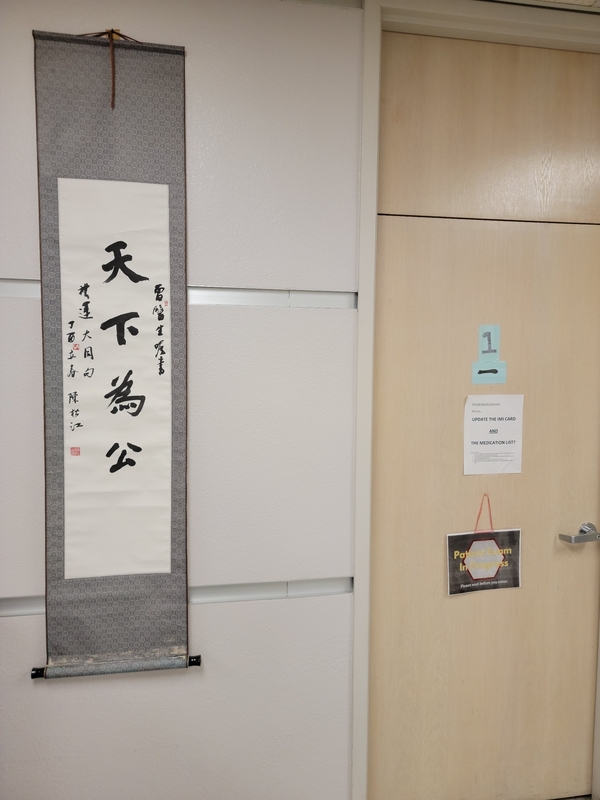
Part I: Paul Hom Asian Clinic
Reporter: Please provide the background and history of Paul Hom Asian Clinic. Is there any other such kind of clinic in California?
Dr. Jan: In 1971 Paul Hom, a 1st year medical student at the University of California at Davis School of Medicine, realized that many Asians in the U.S.A. could not gain access to good medical care. Recall that the U.S.A. was in the middle of the Vietnam War and that 1971 marked the height of the Civil Rights Movement when the feeling was that all people deserve access to good health care. With 6 other medical students and undergraduates from Sacramento State College (as it was known then) Paul Hom formed an Asian free clinic under the guidance of a medical director, Dr. Lindy Kumagai (Chairman and Founder of the Endocrinology Department at U.C. Davis School of Medicine). The Underserved Asians at the time were largely Cantonese-speaking Chinese
Since then, the Paul Hom Asian (Free) Clinic has evolved to the point where approximately 20% of the patients are non-Asians and of the Asians seen at the Clinic approximately half are Chinese, one-fourth are Vietnamese and the remainder speak Hmong, Korean or Mongolian.
Paul died at the age of 59 from pulmonary complications of lupus and while he was dying in the intensive care unit at Mercy General Hospital, he turned to Dr. Lindy Kumagai, …” Lindy, do we have enough flu vaccine for the Clinic?” Then he died. And so, it was fitting that we named the clinic after its dedicated founder, Dr. Paul Hom.
Reporter: What kind services does Paul Hom Clinic provide?
Dr. Jan: In addition to general medicine (with a great emphasis on Diabetes and Hepatitis) the Clinic features specialty services—Musculoskeletal (PM & R), Psychiatry, Dermatology, Gynecology, Cancer Screening, Hepatitis (especially, Hep. B and Hep C), Cardio-Pulmonary, Vascular and Ophthalmology.
Undergraduate students serve as medical assistants and translators for Mandarin, Cantonese, Vietnamese, Hmong, Korean and Mongolian-speaking patients. Medical Students serving the patients learn medicine but equally important is the learning of the joy of serving and of giving back to the community one patient at a time. And that despite the ever-advancing technology there is still the need for the human touch.
As far as I know there are no other Asian Free Clinics in California or even the U.S.A. that is run principally by students.
Reporter: When did you join Paul Hom Clinic and when did you became the Director at the Clinic? What changes and improvements have you made?
Dr. Jan: I was born in the United States and grew up in Sacramento. My father (曾纪谦) was born in Jiujiang Town in Nam Hoi region of Guangdong Province and my mother (陈顺蓉) was born in the U.S.A., but her parents were from Heungshan (now called,” Zhongshan” acknowledging the birthplace of Sun Yat Sen). I was born in the U.S.A. I was taught to be very proud of my Chinese heritage, but I never learned Chinese and when I tried to speak Cantonese, people laughed at me…so, I spoke English and gave up on trying to speak Cantonese.
I learned of the Paul Hom Asian (Free) Clinic [PHAC] while yet a surgical resident at U.C. Irvine School of Medicine. Then upon returning to begin my practice in Vascular Surgery I began volunteering at PHAC because it was one way for me to participate in the Chinese community and to give back.
As far as I can remember I began as Medical Director in 2005 (approx.)
The changes and innovations since 2005 include:
1. Increase in the total number of patients seen each Saturday with expansion to serving more Vietnamese, Hmong, Korean and Mongolian along with the Chinese patients (half speaking Mandarin and half speaking Cantonese) ...as well as 20% non-Asians.
2. Expansion of Specialty services.... Musculo-Skeletal (Physical Medicine and Rehabilitation), Dermatology, Psychiatry, Pharmaceutical Consultation, Ophthalmology, Cardio-Pulmonary, Hepatology, Cancer Screening, Gynecology, Memory Clinic, Diabetes / Nutrition Creation of Annual Health Fair.
3. Fundraising event: "Taste of Asia, a Wine and Asian Food Pairing" which helps to raise needed funds as well as reach out to the community at large beyond the Asian community.
4. Creation of a Patient Assistance Program to assist patients in obtaining expensive branded medication from the pharmaceutical companies.
5. Introduction of Electronic Medical Records along with Charts (paper),
6. Covered California Committee to help patients enroll into some form of health insurance...most commonly MediCal (with the expanded eligibility defined by the Affordable Care Act). Some of the undergraduates are Certified Enrollment Agents for MediCal.
Reporter: What is the organization of the Clinic? How many volunteers does the clinic have, who are they and where are they from?
Dr. Jan: Approximately, 30 M.D.’s (3 to 6 per Saturday) from Private Practice in the community, from the University of California at Davis School of Medicine, some M.D.’s from the Chinese American Medical Association of California [CAMAC]: Every patient is seen by a licensed M.D. –usually after being seen first by a medical student or FNP / PA student.
4 R.N.’s (2 per Saturday) from the University of California at Davis Medical Center Phlebotomy: Each R.N. draws blood for laboratory testing.
15 Medical Students (6 per Saturday) from the University of California at Davis School of Medicine: Each medical student sees patients, reviews with M.D.’s, and heads up committees on medical specialties
10 FNP / PA Students (2 to 3 per Saturday) from the University of California at Davis School of Nursing: Each FNP/PA student sees patients. reviews with M.D.’s, and heads up committees on medical specialties
80 Undergraduate Students (35 per Saturday) from the University of California at Davis and California State University at Sacramento: Each student serves as a Patient Advocate functioning as Medical Assistants, Medical Translators, Medical Educators for patients who need additional laboratory studies, imaging studies or referral to medical specialists. The students also run the very active Patient Assistance Program to obtain branded medication for patients who cannot afford medication.
3 Nutrition students (1 per Saturday) from the University of California at Davis: Each student counsels patients about dietary needs for different conditions.
15 Board of Directors for PHAC (Paul Hom Asian Clinic), a 501 © 3 Corporation (non-profit) include
Community members (2)
R.N. (1)
M.D.’s (7)
Medical Students (3)
Undergraduate Patient Advocates (2)
The Board of Directors deals with interactions between PHAC and the University, between PHAC and the public and between PHAC and media; approves and recommends when needed policy changes in PHAC
Reporter: What kind of training is provided to the student volunteers?
Dr. Jan: Undergraduate Patient Advocates (called, “P.A.’s”) are trained by the undergraduate leaders who recruit, screen and select (on average 5 applicants for every position)….then, educate in the skills of medical assistance (taking vital signs, interacting with patients, etc.) and in medical terminology in Cantonese, Mandarin, Vietnamese, Hmong, Korean and when available, Mongolian) as well as in educating the undergraduates in how to translate terms not traditionally used (subjects that may be taboo for example, “death and dying,” “psychological or psychiatric concerns” or “sexual habits or sexual preferences.”) Although never discussed with family or even close friends occasionally, these subjects need to be mentioned.
Medical Students and FNP / PA Students are trained by M.D.’s as they learn medicine (application of basic science, principles of medicine and style of presentation of cases to M.D.’s), the joy of interacting with patients, cultural sensitivity, and the value of giving back to the community.
To the community of undergraduate students at U.C. Davis and students at CSUS the PHAC has been known as an organized very active free clinic with a large number of students successfully pursuing careers in health care. There are 5 applicants for each position as undergraduate volunteers at PHAC.
However, to really answer the question of the impact of the Paul Hom Asian (Free) Clinic upon the community it would be difficult to know without knowing the health statistics in the Asian population in Sacramento over the past 50 years, the percentage of the Asian community served by the Paul Hom Asian (Free) Clinic and the conditions of each of the patients. I can say that over the past 50 years over 12,000 patients have been seen at the Paul Hom Asian (Free) Clinic. The following is an excerpted letter of gratitude from one of our patients who wishes to remain anonymous (name known only to us at the Paul Hom Asian (Free) Clinic):
“Dear Dr. Jan, Preceptors and Students, Hello!
I am a special cardiopulmonary patient. I would not be here today without the care I received from Dr. Jan, nor will I have the chance to talk to all of you and thank you for your care from the bottom of my heart.
. ... I don’t feel chest pains anymore, and all my further EKG’s were normal... (giving to) me a second life.
Thank you all!”
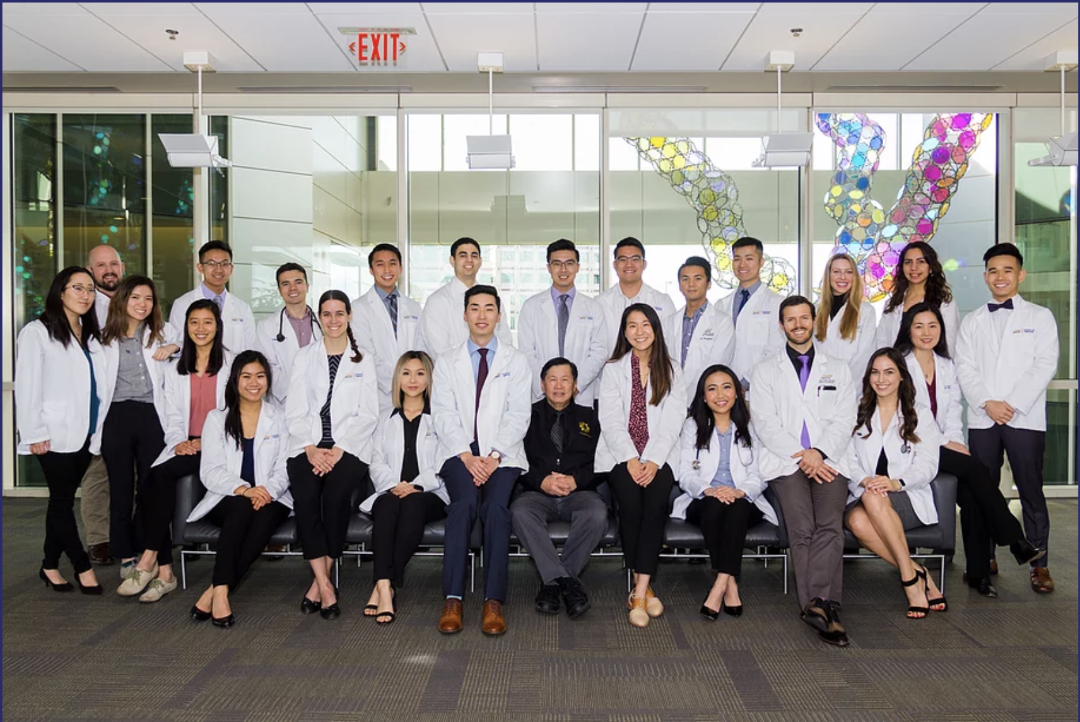
Part II: Dr. Ronald Jan
Reporter: Professionally, who is your role model and why?
Dr, Jan: I have several role models each of whom have given to me much wisdom and have influenced my outlook and attitude…
1. Dr. Rolland Lowe (cousin on my mother’s side) and Philip Choy (cousin on my father’s side), both of whom epitomized serving the Chinese community.
2. Dr. F. William Blaisdell, Chief of Surgery at U.C. Davis & formally of San Francisco General Hospital, was dedicated to teaching and to serving each patient and to accept ownership of responsibility.
3. Dr. Robert Bartlett, a brilliant and superb teacher, inventor of the incentive spirometer and pioneer in ECMO (the artificial heart / lung machine) exemplified eternal optimism & hope.
4. Dr. Paul Hom was founder of the Asian Free Clinic was dedicated and exemplified selflessness.
5. Dr. Lindy Kumagai the original medical director of the Asian Free Clinic represented a quiet strength dedicated to serve the underserved Asian community with humility & wisdom.
All these people demonstrated brilliance, dedication, courage, and a strong sense to serve mankind yet with humility
Reporter: What is your favorite motto and why?
Dr. Jan: I have two favorite mottos:
1. “When you help someone, you must help them all the way…When you seek Buddha, you must go all the way to the West.”
Because it was taught to me by my mother –the kindest and most gentle soul that I have known—giving without expectation of receiving any recognition.
2. “When you go to the well to drink the water, remember who dug the well.”
Because it was taught to me and exemplified by both of my cousins to be mindful of the many blessings given to me by those before me (and that I should give back to the community)
Reporter: With your 7-day busy working schedule, do you have any free time? How do you spend your free time? Any hobbies?
Dr. Jan: I am very lucky because many of the things that I enjoy can be experienced even when time is limited. When time permitting is longer, I enjoy dining with friends, tasting wine with friends and going to concerts. I also enjoy tasting wines and pairing with a variety of foods—most recently pairing wines with Asian foods.
If time and circumstances permit, I enjoy studying Ancient Chinese History and Chinese Art and going to the Asian Art Museum in San Francisco。
Past experiences in sports (track, cross country, and judo) and in music (piano, trombone, and chorus) have given me an appreciation and greater enjoyment of sports and the arts.
Having studied Piano for 7 years and trombone for 5 years and chorus (1 year in college + 14 years with the Sacramento Symphony) I have a fondness for music. But as you can surmise, my skills are very limited. Still, the experiences have given to me a greater appreciation for music. Music also teaches us the value of teamwork (and what it means to be a team player) and that the whole is often greater than the sum of its parts. Furthermore, music also teaches us that sometimes one needs to take the lead and at other times one must be in a supportive role. There are many values in life that music can teach us.
Reporter: My understanding is that you are very knowledgeable about wine tasting. Please tell me what kind wine you are most interested in tasting? Please talk about your wine tasting experience. I also understand that you are interested in pairing wines with food. Please help us understand the term “pairing” and your interest in “pairing”.
Dr. Jan: First, let me say that I am not an expert in the field of wines…I am a student (a student who is very serious about understanding wines but still a student). I ask two principle questions about a wine…
1. Do I like the wine?
2. How well do I think the wine represents the grape, the region (“terroire”), the year (vintage) and the intended style?
But of course, these questions can be asked of just about any art form…Do I like the work of art? And how well do I think that this work of art represents the artist, the region of the world and the year in which the art was created?
I do like many different wines…and I select the wine to match the food, the mood, and the company. And I ask, “What does each wine brig to the occasion?” (Just as one might ask, “What does each instrument bring to the symphony?”)
Reporter: You were born and grew up in the USA, why are you interested in Chinese history, art, and culture? Specifically, what is the part/area of Chinese history, art, and culture that interests you the most and why?
Dr. Jan: Although I was president of the Chinese Students Club at U.C. Berkeley, it was pointed out to me that I looked Chinese but that I did not read Chinese, did not write Chinese, could not speak Chinese, nor understand Chinese when it was spoken. In fact, there was nothing about me that was Chinese.
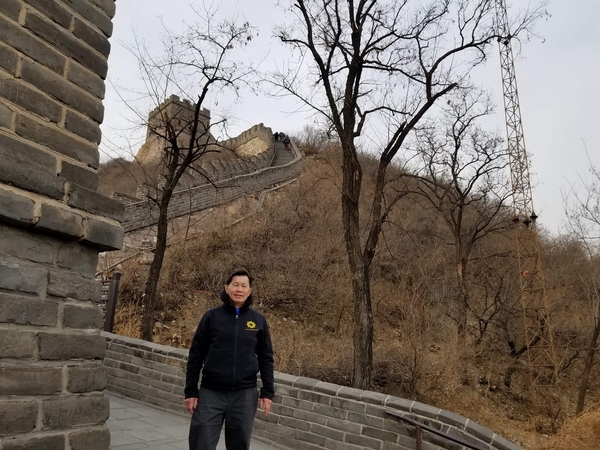
After I picked up my self-esteem off the floor, I realized that he was right. But I could not take the time to study China—the language, the history, the art, and the culture. I needed to study. However, I never forgot that void in my life. As an adult having completed my studies and beginning my career, I sought to fill that void by studying what I could find written in English about the History of China and the arts of China.





